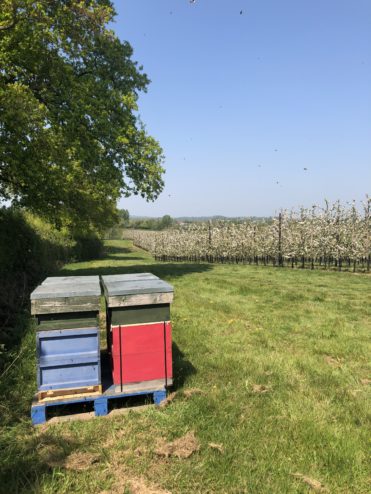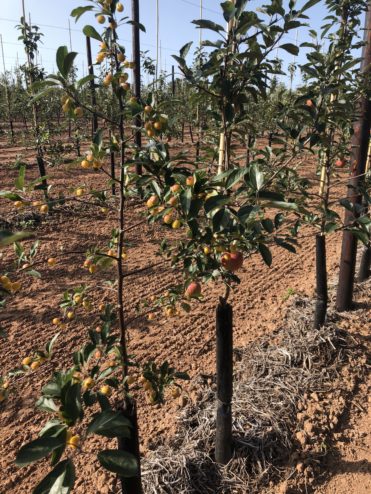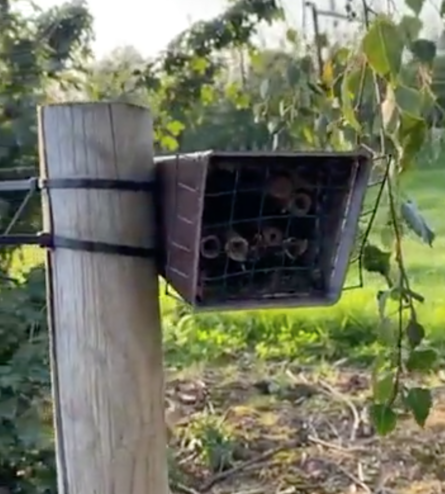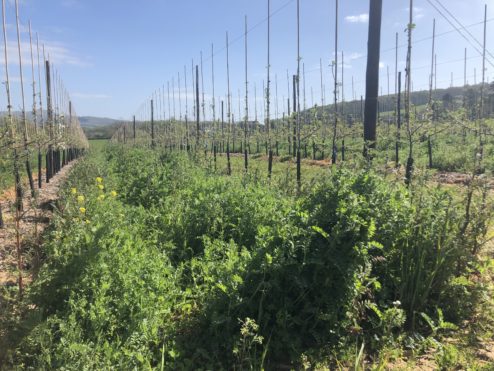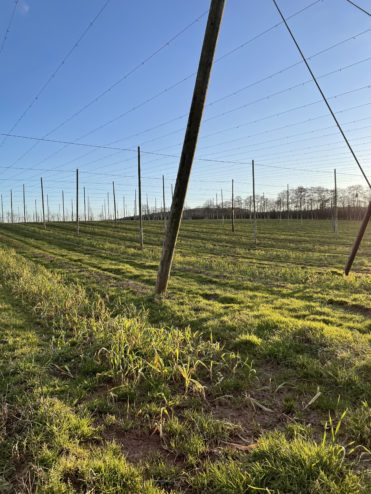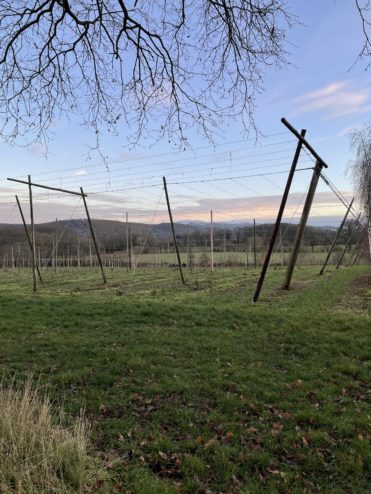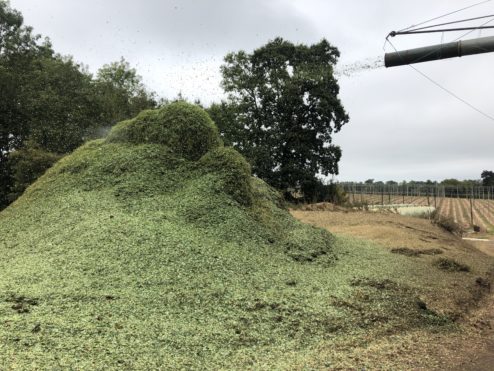Biodiversity at Stocks Farm
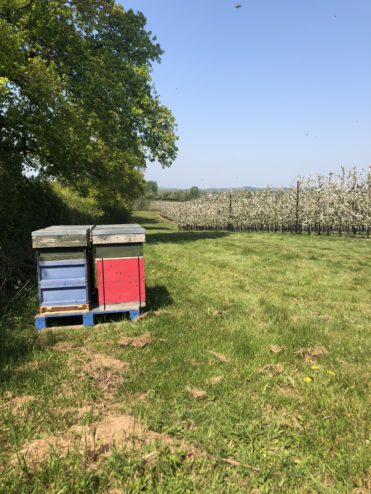
At Stocks Farm, we know that we are not just farmers for this generation, but custodians of the land with the goal to improve what is around us for future generations. We want to support our environment around us, and we are always thinking about the biodiversity of our landscape – not only when planting new orchards or hop yards but how we can improve what is already in place too. Below are some examples of what we are currently doing across the farm.
Beehives, Bee Hotels and Pollinators
One of the most important part of growing apples is making sure that when the trees are in blossom we achieve excellent pollination, otherwise the tree will not produce any fruit. Each spring, bee keepers from our local community bring their hives into the orchards. This reciprocal relationship means that bees get wonderful apple blossom pollen to fill their hives with, and our fruit trees get pollinated perfectly.
To encourage the bees, each orchard is planted with “pollinators” which are crab apple trees. It’s a very old orchard trick as crab apples can pollinate any apple variety, as long as they are in blossom at the same time. They blossom for a long time too, so get the bees flying around the whole orchard doing an excellent job pollinating.
This funny little box on a stick is actually a “Bee Hotel.” These can be found around the headlands of the orchards. They provide an ideal home for solitary bees who are very important pollinators in our orchards.
Wildflowers and Green Covers
Over the last couple of years, we have looked at the way that we manage the ground – soil is one of our most important assets, so we need to keep hold of it!
The orchards have benefitted from our new three row crop sprayer – the sprayer drives down a central row, leaving two rows untravelled either side. This enables us to plant wildflower and pollinator mixes down these untravelled rows to encourage pollinators and biodiversity of the orchards. We also plant up the headlands of the orchards with wildflowers too. These mixes are filled with varieties such as fescues, oxeye daisy, yellow rattle and winter vetch.
Once the hops are harvested in the autumn, the yards are planted with a “green cover” – this is a mix of black oats, rye and phacelia. The cover provides the soil with structure, organic improvement and helps to prevent run off and soil erosion during the winter.
Hop Waste Mulch
As the hop bines go through the picking machine, the hops are separated from the leaf and strig, and this is blown out of the shed and into a pile. We leave this to rot down and then this hop waste mulch is used beneath the fruit trees in the orchards. We do this over the winter for a number of reasons:
- It acts as a soil conditioner – encouraging the worms.
- It prevents transpiration (or evaporation) which reduces the need to irrigate
- It suppresses weeds which reduces the need to spray
Unexpected Benefits to Biodiversity
An unexpected benefit to the local wildlife and biodiversity is fruit left in the orchards. 2020 was a great year for the birds because the cider fruit was not picked at all (due to Covid-19 and pub closures) and there was frost damaged dessert fruit left behind too. Standing in the orchards, there was a deafening sound of fieldfare during winter as they flew from orchard to orchard making the most of the abundance of food.
We are always looking to new developments that will enable us to support the environment in the best way possible and bringing these new ideas to the farm enables us to continue to improve and do our best for the beautiful landscape we are fortunate enough to farm.


